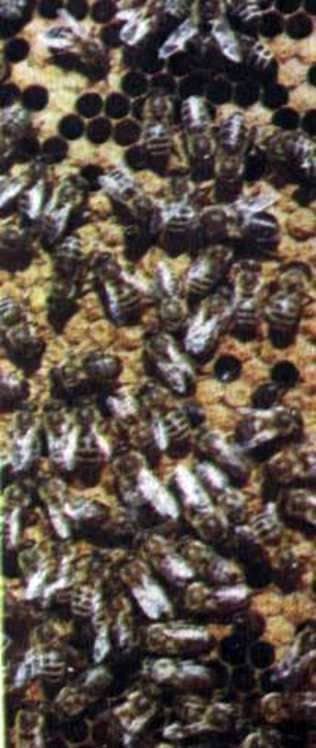
Honey bees are a living particle of nature. They are with her in a close and subtle relationship. Their life and behavior entirely depend on the conditions that develop in nature and, first of all, on the weather and the state of melliferous vegetation. On changes in the external environment, they react very acutely by their actions, adapting to them. In the summer, bees behave differently than in winter, and when many good honey plants bloom, not as in a hungry, impotent time. Nature seems to switch them from one program to another.
There are still winter colds, frosts at night, storms blizzard, but the day has already increased, the sun shines brighter and longer, the daytime air temperature considerably exceeds the night. And wherever the bees spend winter – on the street or in the room, they feel this first breath of spring. A new note appears in their voice.
If before they were barely audible, now the even hum of the family seemed to come closer, intensified. Bees, fleeing from the cold in the empty cells of the honeycomb, now gradually leave, release them, especially in the middle of the honeycomb, where it is warmer. These free cells they thoroughly cleaned, preparing for brood. Only in such glossy polished cells, where there is no mote, the uterus will lay eggs.
They become more attentive and tender towards the uterus, they offer her food more persistently. And wherever it is, a retinue is formed around it, ready to serve it. This attitude to the uterus in winter is not observed. She starts laying eggs.
Oblong, almost transparent, shiny, slightly curved stick with rounded ends of only 1.5 mm, weighing a tenth of a milligram – that’s what this egg is. At one end it is attached, glued to the bottom of the cell and stands with a tiny beacon-peg.
In the first days the uterus carries only 20-30 eggs per day, moreover in the warmest place of the nest. Gradually, the number of eggs laid increases, from one honeycomb to another, occupying new areas. The brood area of the nest is expanded.
After 3 days, a tiny, helpless larva hatches from the egg. But by this time the bees-nurses had already taken care of her. They put in the cell bees milk – nourishing white translucent liquid. Moreover, four to five times the mass of the larva itself. From the first seconds it is provided with a huge supply of food. It is very important for the formation of an organism of the future insect. Even short-term starvation adversely affects its development.
With the appearance of eggs and larvae, bees raise the temperature in the nest to 35 њ C and keep it at this level, regardless of the outside temperature of the air. Only under these conditions is the normal growth and development of larvae.
Bees become mobile, consume more food. Enhanced nutrition promotes the formation of milk. It is very important, therefore, that the hives contain a lot of honey and pollen.
Every day in the nest, more and more broods are becoming – eggs, larvae and pupae. And in 3 weeks after the appearance of the first egg, young bees will begin to be born, which soon themselves will take part in the life of their own family. Its composition is gradually renewed and rejuvenated.
Splitting of bee colonies.
A family that has swelled can be broken up into several small seeds. For each new one take a frame with a royal queen and 2 with brood, forage and bees, put them in a hive and take them to the designated place. The nest is insulated, a small leaflet is left open. As soon as the uterus is paired and begins to lay eggs, the family is strengthened with one or two frames of mature brood from other families. By the autumn the young family will grow stronger. It is provided with food for the winter.
From the swarm family, you can get 4-5 of these seeds. Often they are kept in one hive-hostel. For this, the hive is fenced off with plywood for 4-5 compartments. Each compartment has its own small five-centimeter chute. Families-babies often occupy three frames – one of them is full-blown. Such they and winter. Together they can easily hibernate, there would be food. In the spring they are planted in independent hives, gradually strengthened by brood from strong families. They grow and provide themselves with honey, and with good honey collectors can collect it and more. The apiary grows rapidly.
Органы пчелы. Золотистый щурок.
English